Share
Diving Deep Into “brown, carmine, and blue” With Le’Andra LeSeur
We pride ourselves on having some very impressive in-house talents here at PhotoShelter and have been celebrating an incredible win recently. In ea...
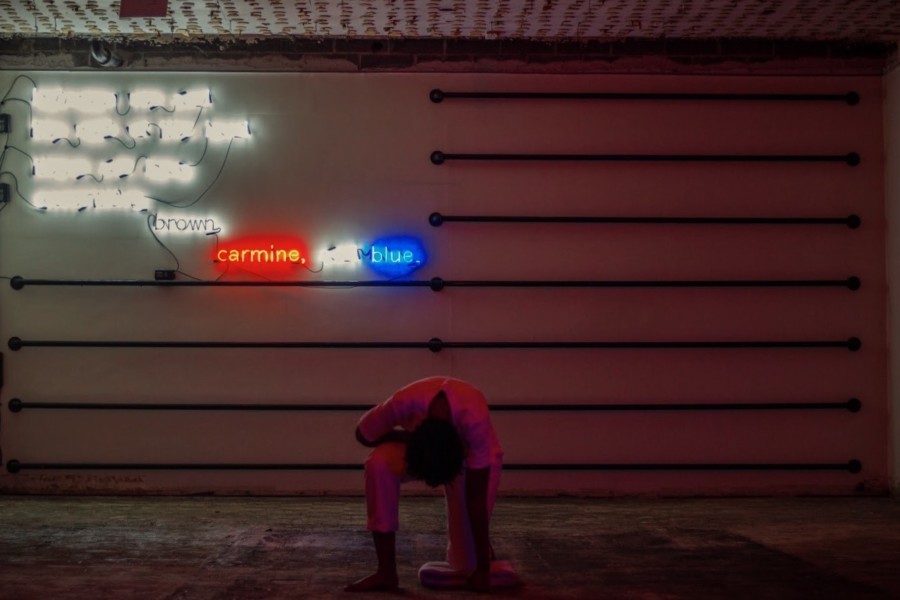
We pride ourselves on having some very impressive in-house talents here at PhotoShelter and have been celebrating an incredible win recently. In early October Le’Andra
Le’Andra describes the piece as a love letter to herself. She notes that it’s, “a reflection of my undying quest to break down power constructs that have continuously ostracized the very things that I identify with: blackness, queerness, and my femininity.” You can read the full Artprize description here.
I caught up with Le’Andra to discuss the impact of photography on her work and hear all about her big win. This interview has been lightly edited for length and clarity.
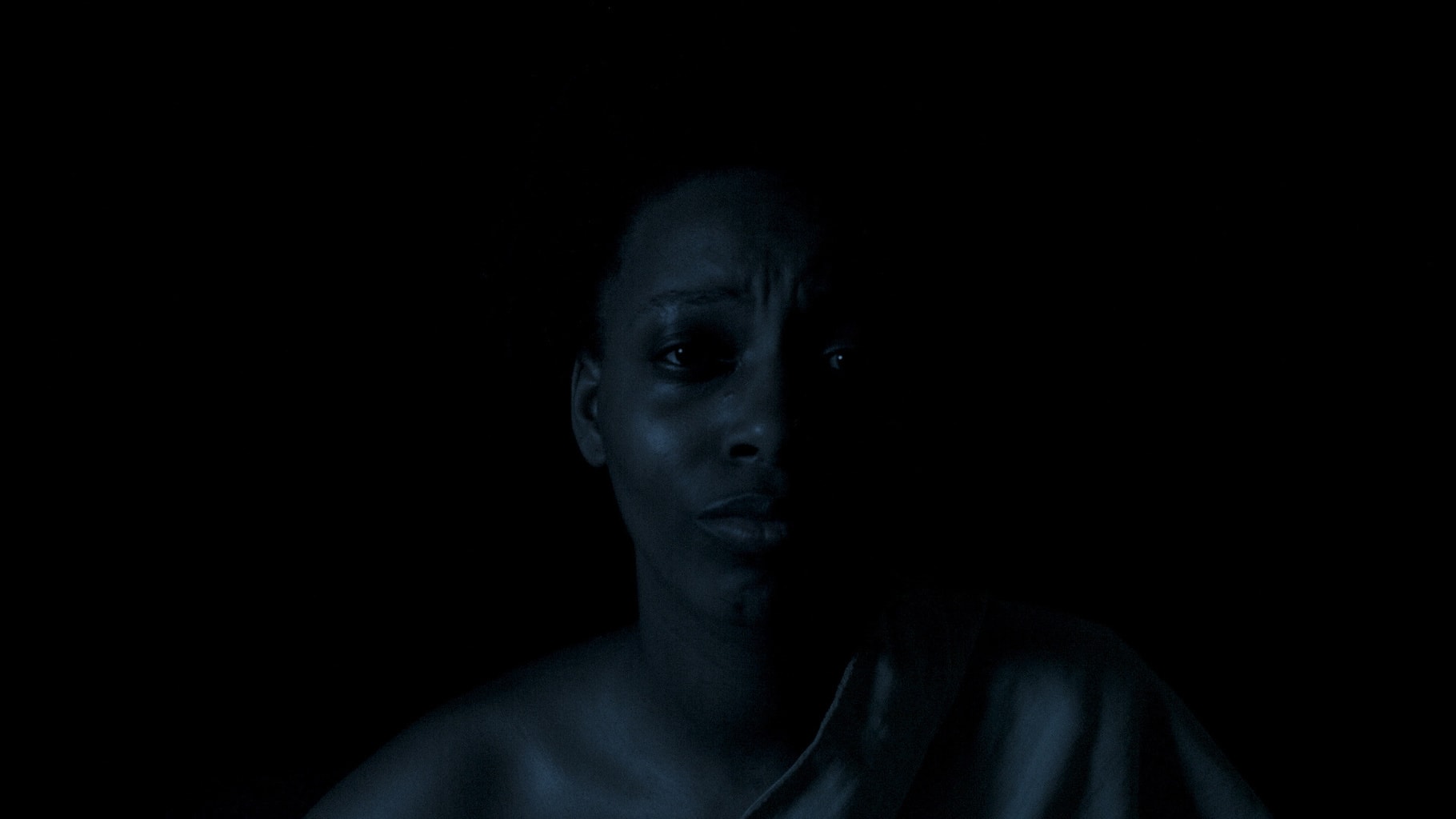
Can you talk to us about your background in photography?
I went to Bucknell University in Pennsylvania and I was playing basketball, that was my main focus. I never thought I would have an interest in the arts, but I had to take this class that was outside of my specific major – business – and it was a way for them to get freshmen involved in other things on campus. So I joined the arts college…[and] was meeting people who were interested in [all types of] creative practices; a lot of theatre students, but I also got a chance to meet some people who were interested in photography. That is what led me to want to actually take my first photo class.
It was like magic almost, in the dark room, where you are putting the paper in the developer and seeing this image pop up, this image that you spent time taking and you didn’t know what it was going to look like. That was something that was really beautiful to me and led me to want to continue to do photography.
After Bucknell LeAndra moved to Atlanta and decided to continue her photography by getting a second bachelor’s degree in Fine Arts at SCAD.

How did you use photography in “brown, carmine, and blue”?
[Many of] the photographs that I used were family photographs because I really wanted to get people excited about this idea of community, this idea of family, this idea of love and how these family portraits really portray that.
Those were a big portion of the piece. They were really near and dear to me, as far as making sure I showcased them. And so was this idea of the value photographs hold…. You look at a photograph and you can kind of feel that person’s life within that photograph. The pictures of me and my family, I think a lot of people really connected with that because they were able to see my life in a nutshell without me even having to say anything to them. They were able to see that joy, that sense of family and love.
Some other images that I had in the space were images directly speaking to the placement of black bodies and how that correlates to what we’re seeing in today’s media. I had an image that was on the cover of LIFE of a young man who was shot and killed in Newark, New Jersey back in ’67 during the riots. So I wanted people to see that image to understand yes, that is a historic image, that is something that’s speaking to something that happened in the past, but it’s also something that we commonly see today, too.

You also included some of your video portraits in the piece, right? Can you talk about those?
I really like working in video outside of photography. I feel like, yes photography can showcase a moment, but what happens after that?
With the video portraits, I’m really focusing on having this entire story told, and not just a specific moment. Because they’re super slow-mo, they almost look like an image. So when someone walks into that space and sees it [they think it’s a photo] but then all of a sudden I would blink in a video portrait and people would be like “What?? Wait, that just moved!”
Where did the name “brown, carmine, and blue” come from?
It’s from a poetry book that I love by Robin Coste Lewis called Voyage of the Sable Venus. The quote that influences most of the pieces is: “between me and the rest of the land, there are bars. Something brown, carmine, and blue.” It struck me as a statement reflecting the state we are in within this country. I used that statement to explore what that means for me as a black queer woman.
-
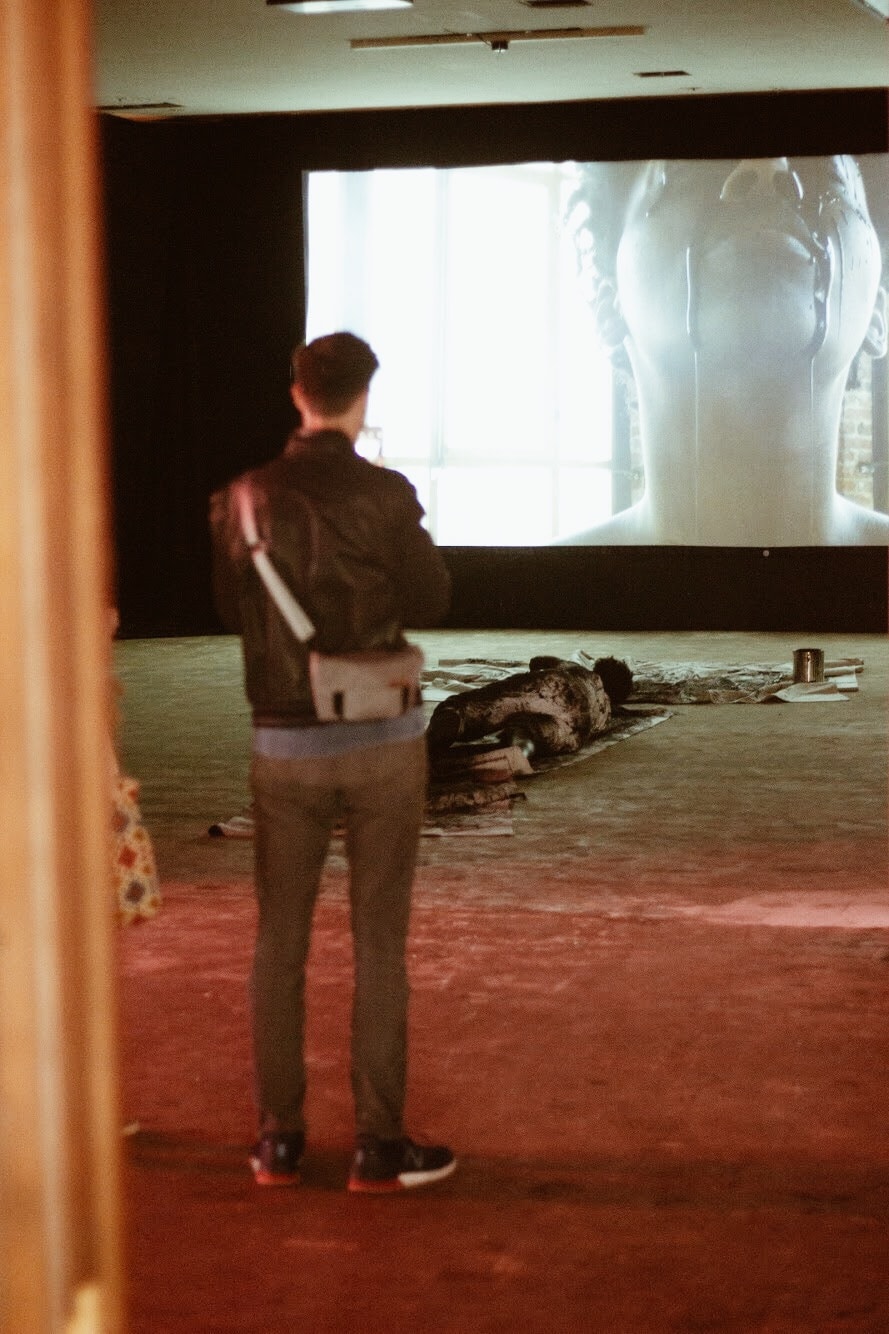
Credit: Joshua Solas -
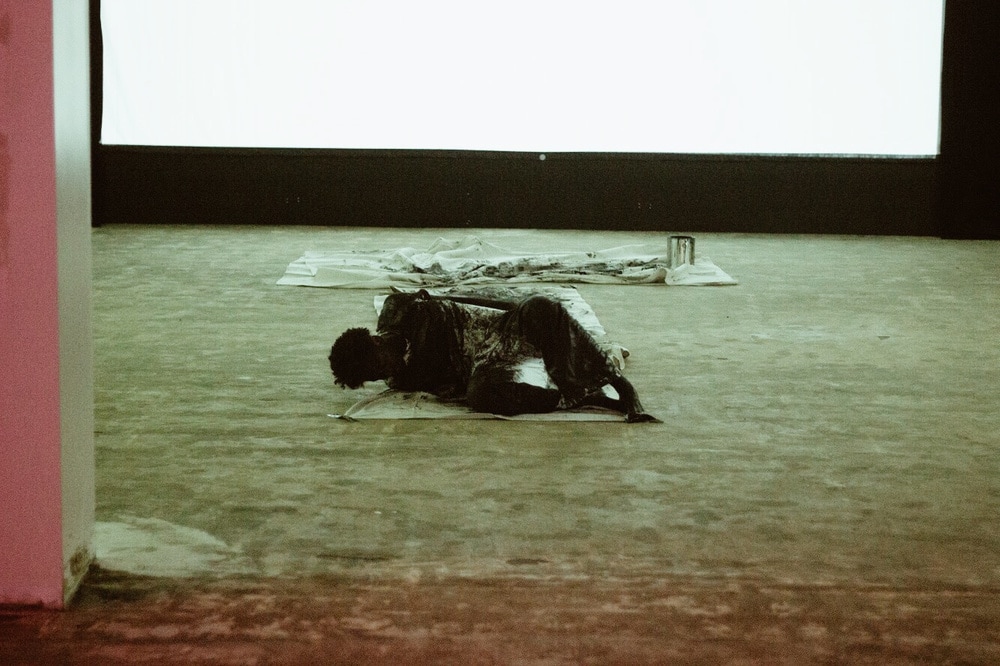
Credit: Joshua Solas -
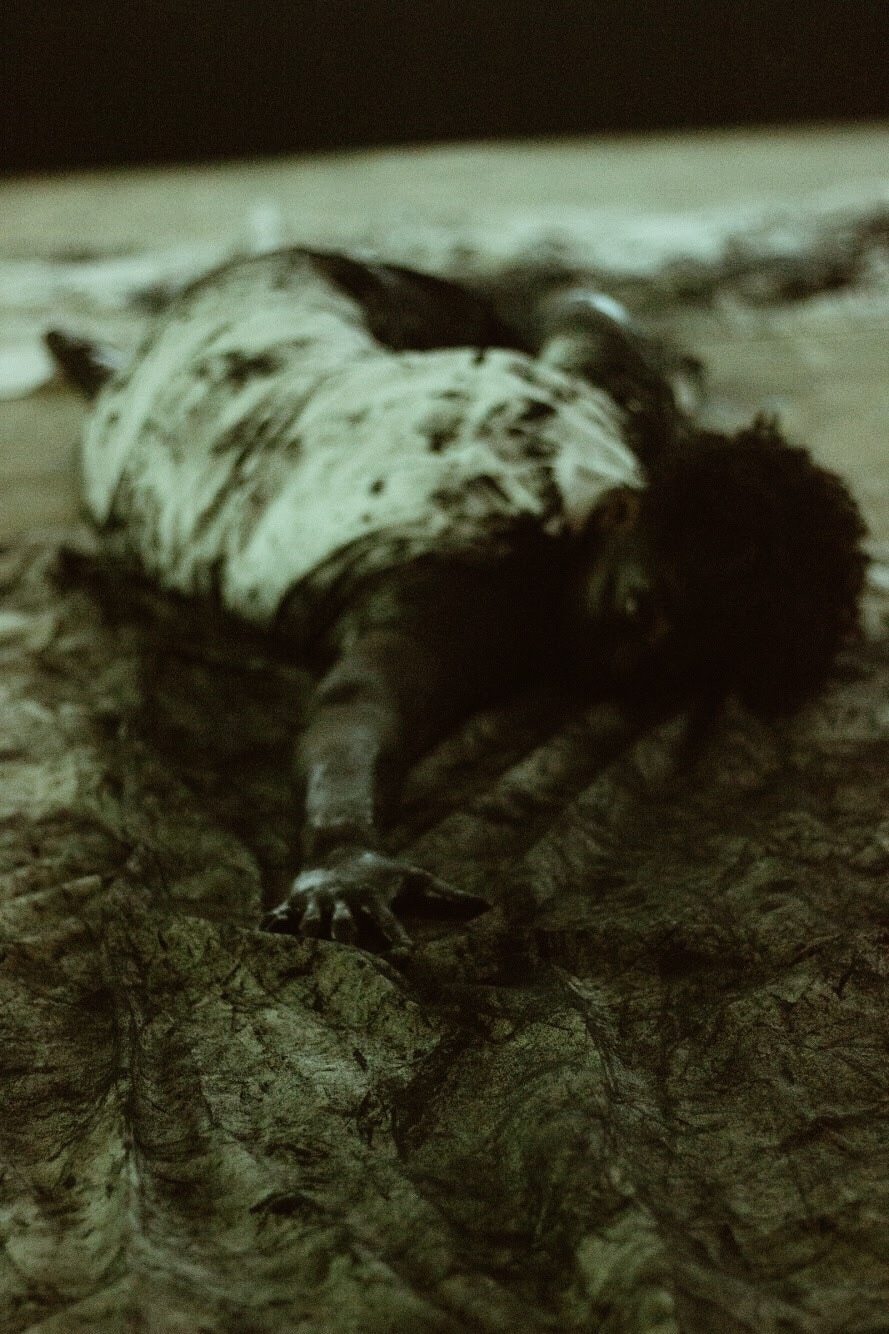
Credit: Joshua Solas -
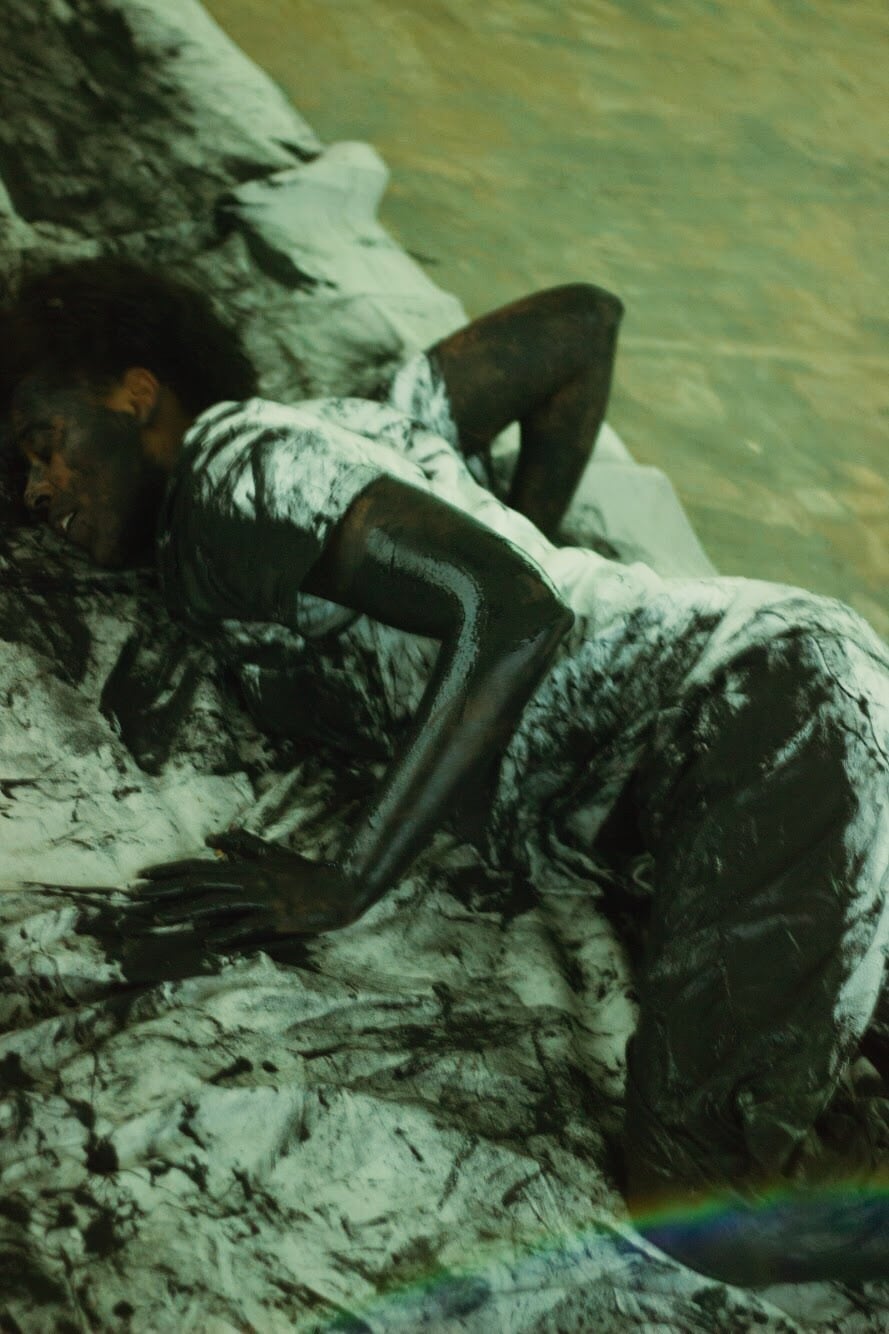
Credit: Joshua Solas
Since you were performing in person and the show is time-based, how did you navigate the photography of your performances? The images are really powerful. Who did you trust to do that and why?
That’s actually really interesting. The guy I got to take the photos, he’s a recent graduate at Kendall College of Art and Design in Grand Rapids. His name is Joshua Solas. He is a painter and didn’t necessarily have that much of a background in photography, so this was his first photo gig.
It was this interesting dynamic because I fully trusted that he would be able to capture the essence of what I was doing and the performances. I feel like with any photographer, or with any artist, you don’t necessarily have to be a professional. I mean, that’s awesome if you are. But if you have that feeling and that connection with what you’re actually shooting, that’s going to come through in the photographs. And I feel like that’s what happened.
Also the space was pretty dark. So I told him, ‘I don’t want any images with flash or anything like that, I just really just want you to take images that evoke this feeling’. Because that’s what I want people to feel when they actually come in the space — maybe they don’t see me right away but they walk in and they feel something. I wanted people who were looking at the documentation and the pictures to also feel that.

How have your performances affected your photography?
I think a lot of times in the past my photography has been talking about other people or other things that are going on with other people, but not necessarily speaking to me or my identity.
Now I’m really focusing on what an image means to me. What does an image look like if it’s something I’m creating for me? That theme of identity, I think is a really big one right now with my photographic work. I’m just trying to examine what identity looks like within an image.
-

Credit: Joshua Solas -

Credit: Joshua Solas
Take a look at this 3D rendering of Le’Andra’s performance space and be sure to check out the images and journals from her show, too. Le’Andra’s other work can be found on her website.


